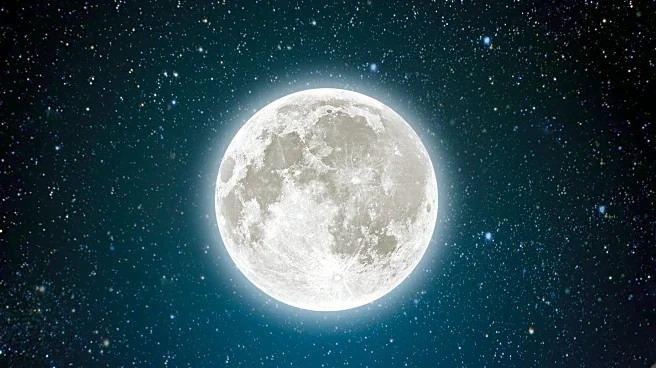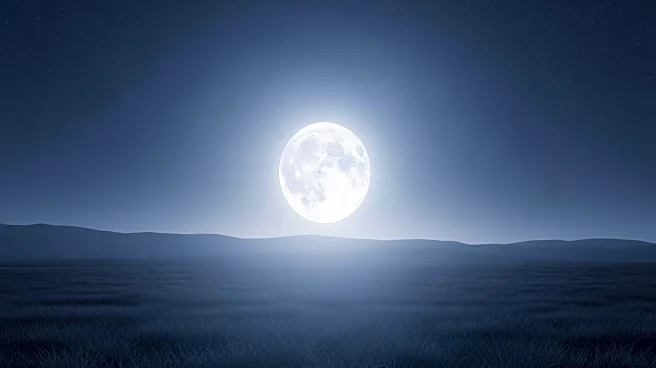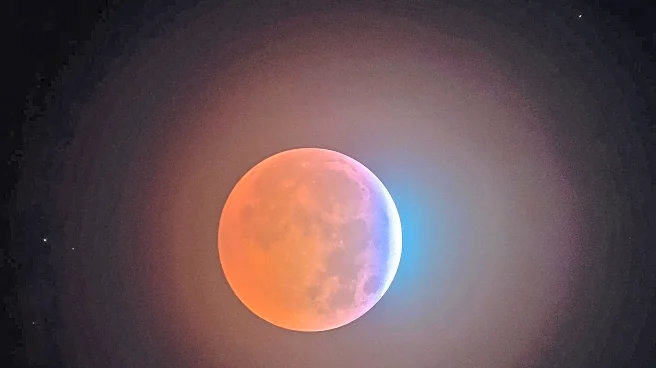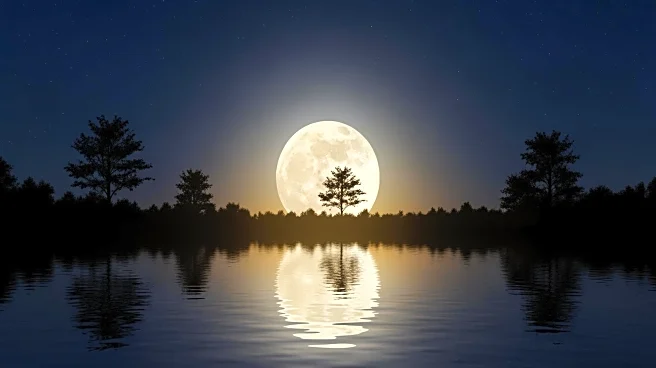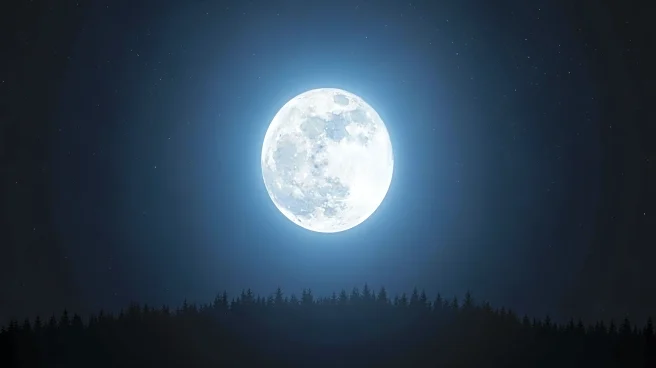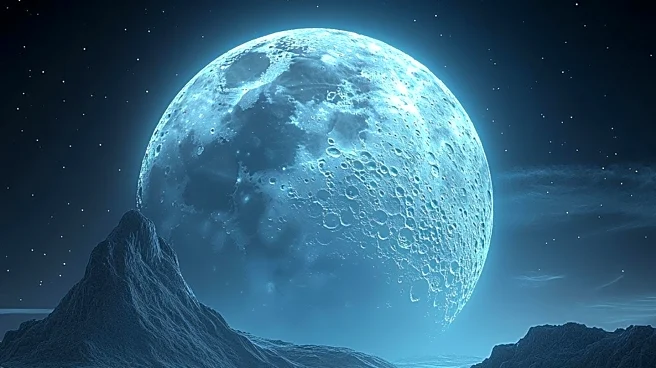What's Happening?
The Beaver Moon, the largest and brightest supermoon of 2025, is set to rise on November 5. This astronomical event occurs when the full moon is at its closest point to Earth, known as perigee, making
it appear up to 14% larger and 30% brighter than when it is at its farthest point, or apogee. The exact moment of the full moon is at 13:19 UTC, which translates to 8:19 a.m. ET. The moon will appear full both tonight and tomorrow night, offering a spectacular view for skywatchers. This supermoon is the closest since 2019 and is part of a series of three consecutive supermoons occurring from October to December 2025.
Why It's Important?
The Beaver Moon's significance extends beyond its visual appeal. Supermoons can have tangible effects on Earth, such as amplifying tides, which may lead to nuisance flooding in low-lying coastal areas. This is particularly relevant for regions like the Pacific Northwest and Florida. The event also provides an opportunity for public engagement with astronomy, as people are encouraged to observe and photograph the moon. The dual naming of this full moon as both the Beaver Moon and the Hunter's Moon reflects cultural and historical traditions, adding a layer of cultural significance to the event.
What's Next?
Following the Beaver Moon, another supermoon is expected on December 4, 2025, offering another chance for skywatchers to witness this celestial phenomenon. Observatories and media outlets are likely to continue providing coverage and guidance on how to best view and photograph these events. Additionally, local authorities in coastal areas may issue advisories related to potential flooding due to the increased tidal effects associated with supermoons.
Beyond the Headlines
The occurrence of supermoons can spark interest in astronomy and science education, encouraging people to learn more about lunar cycles and celestial events. This heightened interest can lead to increased public participation in science-related activities and discussions. Furthermore, the cultural significance of the moon's naming conventions highlights the intersection of science and tradition, offering a unique perspective on how different cultures interpret and celebrate natural phenomena.
